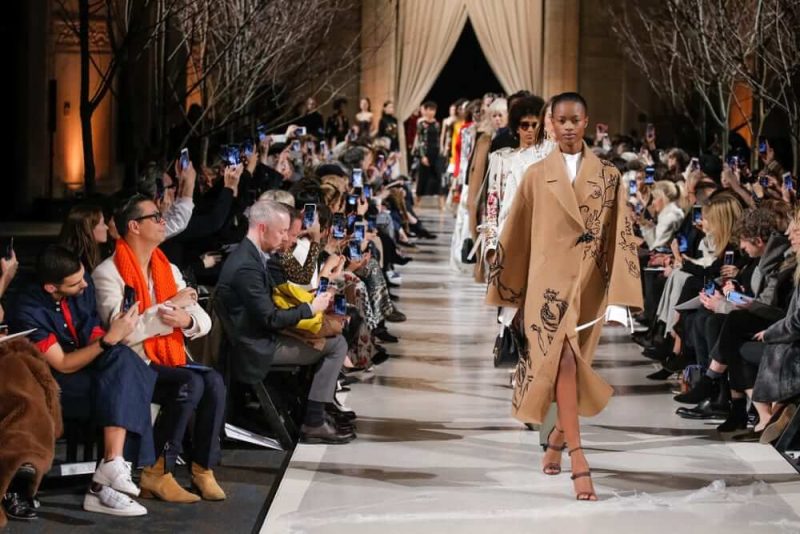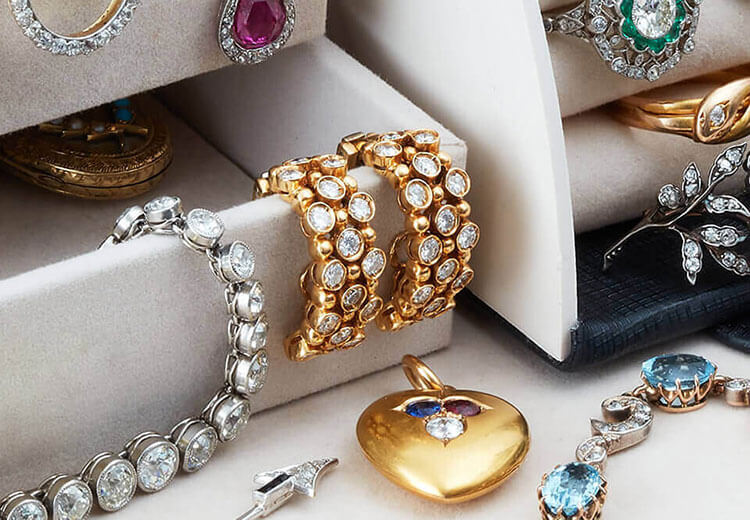The landscape of luxury fashion has been shaped by visionary designers whose creative philosophies transformed not just how we dress, but how we express identity through clothing. These iconic fashion houses have transcended their origins to become cultural institutions—enterprises that balance artistic expression with commercial success while maintaining a distinctive design language across generations. This exploration examines the most influential fashion houses in history, tracing their evolution from individual vision to global phenomenon while analyzing what makes their legacies truly enduring.
Chanel: Revolutionary Simplicity
Founded: 1910 by Gabrielle “Coco” Chanel
Defining Era: 1920s-1930s initial revolution; 1980s-1990s Lagerfeld renaissance
Signature Elements: Interlocking CC logo, quilted leather, bouclé tweed, costume jewelry, little black dress
Few fashion houses have maintained such a clear design philosophy across more than a century. Chanel’s revolutionary approach originated in Gabrielle Chanel’s rejection of the corseted Belle Époque silhouette in favor of relaxed elegance borrowing from menswear and sportswear. Her introduction of the little black dress, costume jewelry, and jersey separates represented not merely aesthetic shifts but feminist statements about how women should move, breathe, and occupy space.
The house’s resurrection under Karl Lagerfeld beginning in 1983 demonstrated the remarkable elasticity of Chanel’s design codes. Lagerfeld’s genius lay in his ability to simultaneously respect and subvert Chanel’s signatures—exaggerating proportions, introducing irreverent elements, and continually recontextualizing the house’s iconography while maintaining its essential character.
Cultural Impact: Chanel fundamentally altered fashion’s trajectory by introducing a modern, functional elegance that prioritized movement and comfort without sacrificing sophistication. The house’s influence extends beyond clothing to concepts of feminine identity, luxury branding, and the designer as celebrity.
Defining Piece: The Chanel jacket, introduced in 1954 and continuously reinterpreted since, represents the perfect balance between structure and comfort, masculinity and femininity, tradition and modernity.
Dior: Architectural Romanticism
Founded: 1946 by Christian Dior
Defining Era: 1947-1957 “New Look” period; 1996-2011 Galliano experimentation
Signature Elements: Bar jacket silhouette, full skirts, cinched waists, floral motifs, cannage quilting
In the austere aftermath of World War II, Christian Dior’s “New Look” collection represented a seismic cultural shift—rejecting wartime fabric restrictions and utilitarian designs in favor of abundant fabrics, exaggerated femininity, and romantic extravagance. The house established perhaps the clearest example of a fashion revolution tied to specific historical moment.
What distinguishes Dior is how subsequent creative directors—from Yves Saint Laurent to Maria Grazia Chiuri—have navigated the tension between reverence for architectural heritage and contemporary relevance. John Galliano’s theatrical historicism, Raf Simons’ minimalist futurism, and Chiuri’s feminist reinterpretations each represent distinct approaches to evolving the Dior language while maintaining its core romanticism and structural emphasis.
Cultural Impact: Beyond clothing, Dior pioneered the modern luxury business model through early diversification into perfumes, cosmetics, and global licensing. The house established the pattern of the designer as visionary storyteller presenting complete aesthetic universes rather than mere collections of garments.
Defining Piece: The Bar Jacket from 1947 embodies Dior’s architectural approach to construction—creating feminine silhouettes through precise tailoring rather than restrictive undergarments.
Louis Vuitton: Practical Luxury
Founded: 1854 by Louis Vuitton
Defining Era: 1896-1914 initial global expansion; 1997-present luxury conglomerate period
Signature Elements: LV monogram, Damier check pattern, travel heritage, collaboration model
Unlike houses originating in haute couture, Louis Vuitton’s heritage lies in practical innovation—specifically, the development of flat-topped trunks that could be stacked, revolutionizing travel logistics. This foundation in functional luxury continues to inform the brand’s approach even as it has expanded far beyond luggage.
The house’s transformation under LVMH ownership—particularly during Marc Jacobs’ 1997-2014 creative direction—created the template for heritage brand revitalization. By introducing ready-to-wear, staging groundbreaking artist collaborations (Stephen Sprouse, Takashi Murakami, Yayoi Kusama), and balancing commercial monogram products with experimental runway presentations, Jacobs established a blueprint followed by countless luxury brands seeking relevance for new generations.
Cultural Impact: Vuitton pioneered the concept of accessible luxury—products that, while expensive, could be purchased without custom fittings or special orders. The house also established the modern framework for artist-fashion collaborations and the concept of the creative director as brand curator.
Defining Piece: The Speedy bag, originally created in 1930 as a smaller version of the keepall travel bag, represents the perfect balance between heritage recognition and practical functionality.
Hermès: Quiet Perfection
Founded: 1837 by Thierry Hermès
Defining Era: 1920s-1930s expansion beyond equestrian goods; 1980s-present luxury positioning
Signature Elements: Handcrafted leather goods, equestrian heritage, silk scarves, subtle luxury, Birkin and Kelly bags
Hermès stands apart for its unwavering commitment to craft excellence over fashion trends—an approach that prioritizes materiality, technique, and quiet sophistication over seasonal novelty or logo prominence. Beginning as a harness workshop serving European nobility, the house has maintained its emphasis on functional perfection across nearly two centuries.
What distinguishes Hermès’ business model is its resistance to common luxury industry practices: minimal licensing, controlled production scaling, vertical integration of craft workshops, and limited seasonal turnover of designs. This approach has positioned the brand at luxury’s absolute pinnacle while insulating it from fashion’s cyclical volatility.
Cultural Impact: Hermès established the concept of “stealth wealth” luxury—products whose quality is recognizable primarily to those with similar connoisseurship rather than through obvious branding. The house also created the modern concept of the waiting list as a luxury marketing strategy through its deliberately constrained production of Birkin and Kelly bags.
Defining Piece: The Birkin bag, created in 1984 for Jane Birkin, represents functional luxury in its purest form—a design whose value derives from material quality, craft excellence, and practical utility rather than fleeting trends or obvious branding.
Balenciaga: Architectural Innovation
Founded: 1919 by Cristóbal Balenciaga
Defining Era: 1950s-1960s structural experimentation; 2015-present Demna reconceptualization
Signature Elements: Sculptural silhouettes, volume play, technical innovation, architectural approach
Cristóbal Balenciaga—whom Christian Dior called “the master of us all”—approached fashion with an architect’s structural understanding and sculptural vision. His revolutionary silhouettes—the semi-fitted suit, the baby doll dress, the balloon skirt—liberated the body while creating entirely new relationships between fabric and space.
The house’s remarkable reinvention under Demna Gvasalia demonstrates fashion’s capacity for radical reinterpretation while maintaining conceptual continuity. Where Cristóbal explored volume through couture techniques, Demna investigates similar questions through streetwear proportions, digital manipulation, and cultural commentary—a different vocabulary expressing similar structural concerns.
Cultural Impact: Balenciaga established fashion as intellectual pursuit rather than mere decoration—demonstrating that clothing design could engage with questions of space, volume, and architectural theory. The house pioneered both minimalism (under Cristóbal) and maximalist irony (under Demna) as luxury approaches.
Defining Piece: The 1957 sack dress represents Balenciaga’s revolutionary approach—rejecting body-contouring silhouettes in favor of space between fabric and form, an approach that continues to influence conceptual fashion.
Gucci: Exuberant Eclecticism
Founded: 1921 by Guccio Gucci
Defining Era: 1970s international jet-set period; 1994-2004 Tom Ford sexual revolution; 2015-2022 Alessandro Michele maximalism
Signature Elements: GG logo, horsebit hardware, red and green stripes, Italian craftsmanship, eclectic references
No major fashion house has undergone more dramatic identity transformations than Gucci while maintaining commercial relevance. From its origins in Florentine leather goods to its 1970s jet-set glamour, from Tom Ford’s provocative minimalism to Alessandro Michele’s romantic maximalism, Gucci has repeatedly reinvented itself while retaining core brand signifiers.
This chameleonic quality represents both risk and opportunity—allowing Gucci to capture the zeitgeist across different eras while potentially diluting brand consistency. The house exemplifies fashion’s tension between heritage continuity and creative reinvention.
Cultural Impact: Gucci pioneered fashion’s relationship with celebrity culture, particularly during the Ford era when provocative advertising and red carpet presence transformed the brand’s cultural positioning. Under Michele, the house demonstrated how social media-driven maximalism could revitalize heritage luxury for digital native consumers.
Defining Piece: The Gucci loafer with horsebit hardware, introduced in 1953, has maintained relevance through multiple fashion cycles—adopted by everyone from 1980s Wall Street executives to contemporary hip-hop artists.
Yves Saint Laurent: Intellectual Sensuality
Founded: 1961 by Yves Saint Laurent
Defining Era: 1966-1976 revolutionary gender experimentation; 1996-2000 Tom Ford revitalization
Signature Elements: Le Smoking tuxedo, Mondrian-inspired designs, safari jackets, North African influences, left-bank intellectual aesthetic
Yves Saint Laurent fundamentally altered fashion’s relationship with gender, art, and cultural appropriation. By introducing traditionally masculine elements into women’s haute couture—most famously the tuxedo—Saint Laurent transformed not just silhouettes but power dynamics, creating clothing that combined intellectual rigor with sensual appeal.
The house pioneered the concept of ready-to-wear as a designer-led category with the 1966 introduction of Saint Laurent Rive Gauche—bringing couture sensibilities to accessible price points. This democratizing impulse, combined with the founder’s engagement with contemporary art and street style, established fashion as cultural conversation rather than mere elite consumption.
Cultural Impact: Saint Laurent established the modern concept of the designer as tormented artist/celebrity and pioneered fashion’s engagement with countercultural movements. The house demonstrated how couture techniques could address contemporary social questions, particularly around gender and sexuality.
Defining Piece: Le Smoking tuxedo, introduced in 1966, transformed a male power symbol into a statement of female empowerment—a conceptual approach that continues to influence gender-fluid fashion.
Prada: Intellectual Subversion
Founded: 1913 by Mario Prada (transformed under Miuccia Prada from 1978)
Defining Era: 1990-2005 “ugly chic” period; 2010-present conceptual minimalism
Signature Elements: Technical nylon, conceptual simplicity, intellectual approach, inverted luxury codes, Saffiano leather
Under Miuccia Prada’s direction, the family luggage business transformed into fashion’s intellectual vanguard—challenging conventional beauty standards and luxury signifiers through what she termed “the beauty of intelligence.” Prada’s subversive approach—elevating humble materials like nylon to luxury status, finding sophistication in deliberately awkward proportions—represents fashion’s most consistent philosophical position.
The house stands apart through its commitment to conceptual continuity rather than seasonal reinvention. While aesthetics evolve, Prada maintains an underlying questioning of taste hierarchies and luxury conventions, creating a recognizable intellectual approach across changing visual expressions.
Cultural Impact: Prada elevated fashion discourse from surface-level trends to deeper intellectual examination, demonstrating how clothing design could engage with feminist theory, art history, and political questions. The house established the concept of “ugly chic” and the deliberate subversion of conventional beauty as a luxury position.
Defining Piece: The 1984 black nylon backpack with minimal branding represented a revolutionary luxury statement—valuing intellectual understanding over ostentatious display.
Valentino: Refined Romanticism
Founded: 1960 by Valentino Garavani
Defining Era: 1960-1973 jet set period; 2008-present Pierpaolo Piccioli evolution
Signature Elements: Valentino red, Roman heritage, intricate couture techniques, romantic femininity, rockstud details
From its inception, Valentino defined a particular vision of European sophistication—combining Roman grandeur with precise technique and unapologetic glamour. The house’s consistency lies in its commitment to beauty without irony or conceptual distancing, maintaining couture craftsmanship while evolving its expression of romanticism.
Under Pierpaolo Piccioli’s current direction, Valentino has achieved a remarkable balance—preserving couture techniques while expanding the brand’s emotional and inclusive range. His color experimentation, volume exploration, and casting diversity have revitalized romantic classicism for contemporary sensibilities.
Cultural Impact: Valentino established the modern relationship between haute couture and celebrity dressing, particularly through red carpet moments. The house represents perhaps the purest continuation of traditional couture values—prioritizing beauty, craft, and emotional impact over conceptual positioning.
Defining Piece: The 1968 all-white collection culminating in Jacqueline Kennedy’s wedding dress to Aristotle Onassis established Valentino’s romantic language and connection to moments of personal significance.
Burberry: Heritage Reinvention
Founded: 1856 by Thomas Burberry
Defining Era: 1914-1918 military innovation period; 2001-2018 Christopher Bailey modernization
Signature Elements: Trench coat, nova check pattern, gabardine fabric, British heritage, outerwear focus
Burberry’s journey from functional outerwear supplier to global luxury house demonstrates the successful transformation of utilitarian heritage into aspirational positioning. The company’s core innovation—weatherproof gabardine fabric—established utility as its founding principle, with Thomas Burberry’s trench coat design for British officers in WWI creating an archetypal garment that transcended its military origins.
The house’s most impressive achievement has been maintaining relevance across dramatically different eras—from exploration equipment supplier to conservative British staple to contemporary luxury fashion house. This adaptability while retaining core heritage signifiers represents one of luxury’s most successful brand evolutions.
Cultural Impact: Burberry pioneered the modern digital transformation of heritage luxury brands, particularly under Christopher Bailey’s direction with early adoption of livestreamed shows, see-now-buy-now retail concepts, and digital customization. The house also demonstrated successful recovery from brand dilution through strategic license consolidation and upmarket repositioning.
Defining Piece: The Burberry trench coat represents perhaps the most successful translation of military utility to luxury status symbol, maintaining design continuity while evolving its cultural positioning.
The Future of Fashion Houses
As we examine these iconic institutions in 2025, several emerging patterns suggest how heritage fashion houses will evolve:
Tension Between Heritage and Innovation
Successful houses increasingly balance two seemingly contradictory imperatives:
- Maintaining recognizable design codes and heritage narratives
- Delivering newness and cultural relevance to younger consumers
This tension produces various adaptive strategies, from Bottega Veneta’s “stealth wealth” subtlety to Balenciaga’s provocative recontextualization of its structural heritage.
Digital Transformation Beyond Commerce
While e-commerce represented the first wave of digital transformation, fashion houses now face deeper questions about metaverse presence, digital-only products, and the changing nature of physical retail in an increasingly virtual luxury ecosystem.
Sustainability as Luxury Positioning
Environmental responsibility has evolved from peripheral concern to central luxury positioning, with houses like Stella McCartney and Gabriela Hearst demonstrating how sustainability can enhance rather than compromise premium positioning.
Post-Streetwear Luxury Codes
After a prolonged period of luxury-streetwear hybridization, many houses are reexamining formality, craftsmanship, and traditional luxury signifiers—recontextualizing these elements for contemporary consumers rather than abandoning them.
Conclusion: The Enduring Power of Fashion Houses
What makes these fashion houses truly iconic is their transcendence of mere commercial enterprise to become cultural institutions—entities that shape how we understand beauty, identity, and social signaling. Their products function as both personal objects and cultural artifacts, embodying tensions between tradition and innovation, between individual creative vision and collective brand identity.
The most successful houses maintain a delicate balance—evolving continuously while preserving a recognizable creative essence. This paradoxical achievement—changing constantly while remaining fundamentally the same—represents fashion’s most impressive magic trick, one that ensures these iconic institutions will continue shaping our visual and material culture for generations to come.




